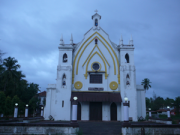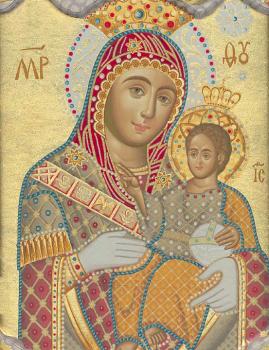
Our Lady of Bethlehem

Our Lady of Bethlehem originates from the time spent in Bethlehem, the city of David, by the holy family. Bethlehem is located about 5 miles south of the city of Jerusalem. According to tradition, Bethlehem is the place where David was born, and also where he was anointed king by the prophet Samuel.
We do not know not long the Holy Family remained in Bethlehem, but, regardless, often in later years on their way from Nazareth to Jerusalem to pray in the Temple, they must have stopped off at Bethlehem. There, they might have visited the place of the Divine Birth and talked with the shepherds and those of the town who befriended them and were kind to them during the time of the Nativity.
How they must have stood, pondering on the events now past, as their gaze fell on the road which they had taken to Egypt to escape Herod’s wrath. The text, “And thou, Bethlehem, are not the least of the cities of Judah, for out of thee shall come the Savior who will deliver His people from their sins,” must have been frequently on their lips, as they in gratitude called down a blessing on the city of Bethlehem, for having given them the shelter it had on that glorious night of the Nativity, that “Silent Night, Holy Night.”
According to tradition, the Milk Grotto, not far from Bethlehem, is the site where the Holy Family took refuge during the Slaughter of the Innocents, before their flight to Egypt. While there, the Virgin Mary nursed her holy Child. Some drops of milk sprinkled the walls, changing to white the color of the stone. The site is venerated by both Christians and Muslims.
According to Franciscan, Brother Lawrence, an American who oversees the grotto and chapel for the Franciscan Custody of the Holy Land, the grotto is at least 2,000 years old. Early Christians came to pray here, but the first structure was built around 385. Known in Arabic as “Magharet el Saiyidee” (The Grotto of Our Lady), the grotto, hollowed out of limestone, has become a place of pilgrimage for couples hoping to conceive a child.
A second legend identifies this site as the location where the Three Kings visited the Holy Family, and presented their gifts of gold, frankincense and myrrh to the Divine Child.[2] A tradition going back to the 7th century, located at this site the burial place of the innocent victims killed by Herod the Great after the birth of Jesus.[3]